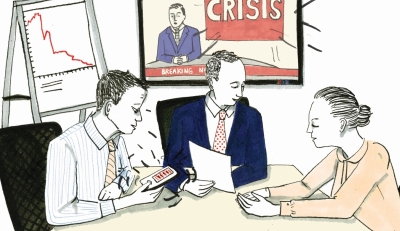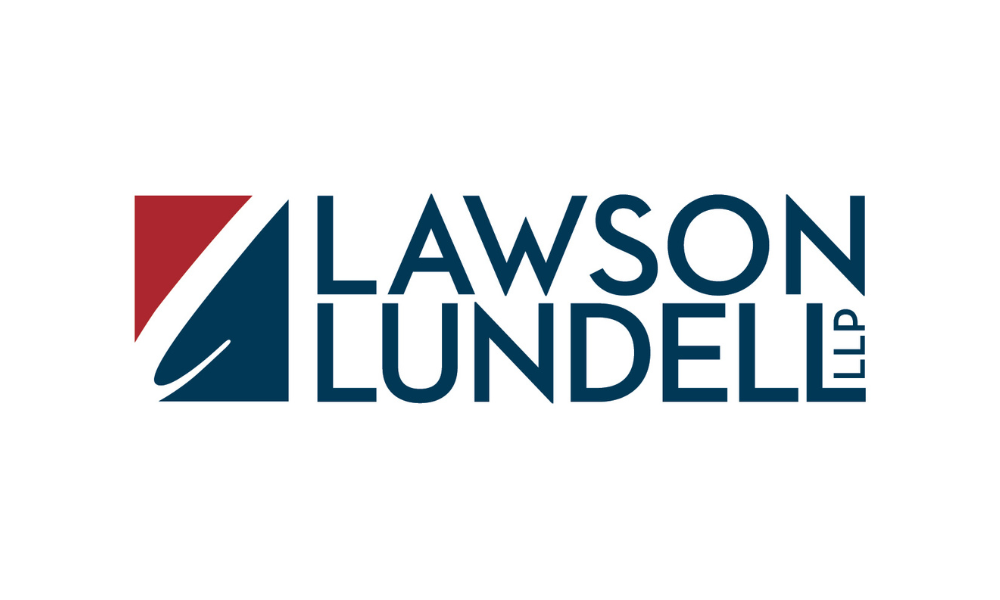WHEN AN ORGANIZATION FACES a crisis, it nearly always faces two kinds of jeopardy: legal and reputational. In the crisis-management field, these two jeopardies have long been dealt with consecutively. The legal issues would take precedence, and once those were sorted, we’d move on to fix the reputational problems.
Times have changed. Today, with the prevalence of Google and social media, reputation is not something that exists only on a newspaper’s front page for a few days. A quick online search can dredge up hundreds of articles detailing every minor aspect of an organization’s activities for years. Because of this unending flow of information, we now live in a world where both jeopardies must be dealt with contemporaneously. We now have to think about jeopardy in a different way. Instead of silos of risk, where one comes before the other, we must think of a crisis situation as an enterprise-wide threat.
One of the best ways of thinking about competing jeopardies is the way we think about competing rights. You don’t need to be a constitutional lawyer to understand that tensions exist between competing rights. The right to free speech occasionally comes into conflict with the right to security of a person being maligned. The right against unreasonable search and seizure often abuts the need for national security.
We have come to expect that, when it comes to rights, we balance them, or we reconcile them. We assess proportionality of effect. In Western democracies, top courts often repeat the maxim that no right is absolute — that they must be balanced and reconciled.
Similarly, the pressure clients face in times of crisis requires us to weigh and balance their competing priorities. This new approach to risk is not to convince lawyers to put aside legal risk. Rather, consider this example: our firm often advises international companies hoping to invest in Canada or the United Kingdom. And, as in most countries, these multinationals are subject to rules and procedures governing foreign ownership. Many parties will weigh in: courts, regulators, politicians, investors, customers and competitors. The transactions can take months to complete.
In the past, the financial team would put together the deal, and then lawyers would worry about getting approvals, managing claims, and so on. Then, when everything was completed, the corporate-reputation firms like ours would ensure that investors, shareholders and customers saw the advantages of the new company.
But today, these events happen at once. If media report that legal processes are going badly, investors get nervous. Loss of investor confidence drives down share prices, and this gives licence to politicians and competitors to criticize the deal, making it seem less likely to succeed. This, in turn, makes regulators nervous and makes it more difficult for the legal team to obtain approvals. A vicious cycle of failure can ensue if these steps aren’t handled effectively. But a well handled transaction can generate positive financial coverage and support an easier road to the legal and regulatory objectives.

The problem is that the legal team fears legal risk, and the communications team fears a reputational risk that will lead to loss of market capitalization and future investment. But it comes down to this: if organizations wait for pleadings and discovery before addressing the reputational issues, there may be nothing left to fight over in court. As Mark Twain once remarked, “A lie can make it half way around the world before the truth can put its pants on.”
It is difficult to strike the right balance between the two jeopardies. The old days were easier, to be sure. But we don’t live in those days anymore. Lawyers and communications professionals no longer have the choice of separately handling each type of risk. We must work together and find the cross-disciplinary solution that balances the realities and jeopardies our clients face.
Jaime Watt is the Executive Chairman of Navigator Ltd. He specializes in complex public-strategy issues, serving both domestic and international clients.
Times have changed. Today, with the prevalence of Google and social media, reputation is not something that exists only on a newspaper’s front page for a few days. A quick online search can dredge up hundreds of articles detailing every minor aspect of an organization’s activities for years. Because of this unending flow of information, we now live in a world where both jeopardies must be dealt with contemporaneously. We now have to think about jeopardy in a different way. Instead of silos of risk, where one comes before the other, we must think of a crisis situation as an enterprise-wide threat.
One of the best ways of thinking about competing jeopardies is the way we think about competing rights. You don’t need to be a constitutional lawyer to understand that tensions exist between competing rights. The right to free speech occasionally comes into conflict with the right to security of a person being maligned. The right against unreasonable search and seizure often abuts the need for national security.
We have come to expect that, when it comes to rights, we balance them, or we reconcile them. We assess proportionality of effect. In Western democracies, top courts often repeat the maxim that no right is absolute — that they must be balanced and reconciled.
Similarly, the pressure clients face in times of crisis requires us to weigh and balance their competing priorities. This new approach to risk is not to convince lawyers to put aside legal risk. Rather, consider this example: our firm often advises international companies hoping to invest in Canada or the United Kingdom. And, as in most countries, these multinationals are subject to rules and procedures governing foreign ownership. Many parties will weigh in: courts, regulators, politicians, investors, customers and competitors. The transactions can take months to complete.
In the past, the financial team would put together the deal, and then lawyers would worry about getting approvals, managing claims, and so on. Then, when everything was completed, the corporate-reputation firms like ours would ensure that investors, shareholders and customers saw the advantages of the new company.
But today, these events happen at once. If media report that legal processes are going badly, investors get nervous. Loss of investor confidence drives down share prices, and this gives licence to politicians and competitors to criticize the deal, making it seem less likely to succeed. This, in turn, makes regulators nervous and makes it more difficult for the legal team to obtain approvals. A vicious cycle of failure can ensue if these steps aren’t handled effectively. But a well handled transaction can generate positive financial coverage and support an easier road to the legal and regulatory objectives.

The problem is that the legal team fears legal risk, and the communications team fears a reputational risk that will lead to loss of market capitalization and future investment. But it comes down to this: if organizations wait for pleadings and discovery before addressing the reputational issues, there may be nothing left to fight over in court. As Mark Twain once remarked, “A lie can make it half way around the world before the truth can put its pants on.”
It is difficult to strike the right balance between the two jeopardies. The old days were easier, to be sure. But we don’t live in those days anymore. Lawyers and communications professionals no longer have the choice of separately handling each type of risk. We must work together and find the cross-disciplinary solution that balances the realities and jeopardies our clients face.
Jaime Watt is the Executive Chairman of Navigator Ltd. He specializes in complex public-strategy issues, serving both domestic and international clients.





